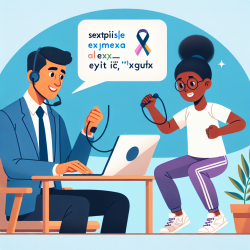Introduction
Substance use among youth is a critical public health issue that has far-reaching implications for individual and community health. A recent study titled "A comparison of the substance use related risk and protective factor profiles for American Indian and White American youth: a mixed studies review" sheds light on the nuanced differences in substance use risk and protective factors between American Indian and White American youth. This blog explores the findings of this study and discusses how practitioners can leverage these insights to enhance their intervention strategies.
Key Findings from the Study
The study employed a comprehensive review of existing literature to identify 84 factors related to substance use, categorized into 55 risk factors and 29 protective factors, utilizing the Social Ecological Model (SEM). The SEM framework helps in understanding the complex interplay of individual, interpersonal, and community influences on health behaviors.
Unique Risk and Protective Factors
- American Indian Youth: More likely to initiate substance use at a younger age and face greater access to substances. They also reported lower parental disapproval and monitoring, and greater neighborhood disorganization.
- White American Youth: Reported easier access to alcohol from parents and home, and higher levels of anger.
Common Factors
Both American Indian and White American youth shared several risk factors such as stressful life events and perceptions favorable to substance use. Protective factors common to both groups included negative attitudes towards substance use and strong family support.
Implications for Practitioners
Practitioners working with youth populations should consider these unique and shared factors when designing intervention programs. Here are some strategies to consider:
- Culturally Rooted Interventions: Programs should be tailored to incorporate cultural values and practices, especially for American Indian communities, to enhance engagement and effectiveness.
- Family and Community Engagement: Strengthening family and community support systems can serve as a protective buffer against substance use.
- Comprehensive Approaches: Interventions should address multiple levels of the SEM to effectively reduce risk factors and enhance protective factors.
Encouraging Further Research
While this study provides valuable insights, there is a need for further research to fill existing gaps, particularly at the institutional, policy, and cultural levels of the SEM. Practitioners are encouraged to collaborate with researchers to develop culturally informed interventions that are responsive to the unique needs of American Indian youth.
Conclusion
Understanding the distinct and shared risk and protective factors for substance use among American Indian and White American youth is crucial for developing effective interventions. By integrating cultural considerations and engaging families and communities, practitioners can create more inclusive and impactful programs.
To read the original research paper, please follow this link: A comparison of the substance use related risk and protective factor profiles for American Indian and White American youth: a mixed studies review.










